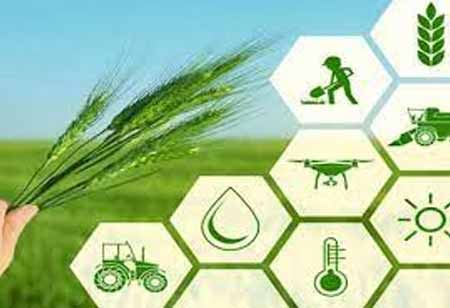Thank you for Subscribing to Agri Business Review Weekly Brief
Cutting-Edge Innovations in Indoor Farming
The advancements increase crop yields and quality and reduce resource consumption, making farming more sustainable.

By
Agri Business Review | Wednesday, February 12, 2025
Stay ahead of the industry with exclusive feature stories on the top companies, expert insights and the latest news delivered straight to your inbox. Subscribe today.
The advancements increase crop yields and quality and reduce resource consumption, making farming more sustainable.
Fremont, CA: Indoor farming is emerging as a groundbreaking solution to address global challenges and sustainable agriculture. With innovations such as vertical farming, AI-driven automation, and advanced technologies, indoor agriculture is shaping the future of food production. Vertical farming is among the most significant advancements, which maximizes space and resources. The transformation is further fueled by cutting-edge technologies like LED lighting, aquaponics, robotics, and biotechnology, making indoor farming more efficient, sustainable, and resilient.
Vertical farming systems typically use hydroponics (growing plants in a nutrient-rich water solution) or aeroponics (growing plants with roots suspended in air and misted with nutrients). These methods significantly reduce water usage compared to traditional soil-based agriculture, using less water. Vertical farms can operate year-round, unaffected by weather conditions, leading to higher productivity and consistent crop availability. Vertical farms are pioneering this space. They produce leafy greens, herbs, and fruits in urban settings closer to consumers, reducing transportation costs and greenhouse gas emissions associated with long-distance shipping.
Farmers can grow various crops regardless of the external climate while minimizing energy and resource use. This innovation is precious in regions with harsh climates or limited agricultural land. Aquaponics is an innovative indoor farming system integrating aquaculture (fish farming) with hydroponics. AI and robotics are transforming indoor farming by automating key processes, increasing efficiency, and reducing labor costs. It allows farmers to make real-time adjustments to lighting, irrigation, and nutrient delivery, improving crop yields and reducing waste.
The closed-loop system is highly sustainable, as it recycles water and nutrients, reducing the need for chemical fertilizers and minimizing waste. Aquaponics is used to grow crops and fish in indoor environments, offering a dual source of fresh food. The system has gained popularity for urban farming and can be particularly beneficial in areas with limited access to water or fertile soil. Some indoor farming operations successfully implement aquaponics to produce fresh vegetables and fish for local markets. Automated harvesting robots, for instance, use advanced imaging technology to identify when crops are ripe and ready for picking.
Robotics can work around the clock, increasing productivity and reducing the reliance on human labor, which is especially valuable in labor-intensive sectors like indoor farming. Many companies are at the forefront of integrating AI and robotics into their indoor farming operations, creating more sustainable and scalable farming systems. Biotechnology is playing a pivotal role in optimizing crops for indoor farming environments.
Scientists and agricultural companies now focus on breeding crop varieties suited explicitly for indoor farming. The advancements help make indoor farming more efficient and sustainable by reducing the need for chemical pesticides and fertilizers. Biotech companies are developing "dwarf" plant varieties that grow shorter and more compact, making them ideal for vertical farming systems. Efforts enhance indoor-grown crops' nutrient content and taste to match or exceed their outdoor counterparts.





